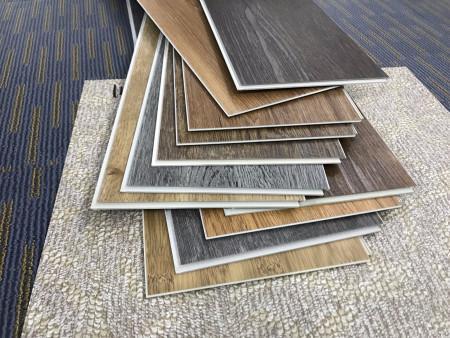

 Industry News
Industry News
Location:Homepage > Media Center > Industry News > Guide to Bamboo Flooring: Your Essential Companion
Guide to Bamboo Flooring: Your Essential Companion
Bamboo Flooring: Unveiling Its Unique Attributes and Advantages
Often mistaken for hardwood, bamboo flooring stands apart with its distinctive qualities and numerous benefits. In this discussion, we delve into what sets bamboo apart and why it serves as an enticing flooring option for homes. This comprehensive guide encompasses the origins of bamboo, its diverse types, finishing techniques, and ways to integrate its style seamlessly into both traditional and contemporary spaces.

Understanding Bamboo
Contrary to popular belief, bamboo isn't classified as wood; it's a type of grass. Yet, it's unlike typical grasses due to its exceptional strength and rapid growth rate. Within a couple of months, bamboo can soar to a towering height of 20 meters, achieving astonishing growth rates of up to 1 meter per day during its peak season. Remarkably, bamboo reaches full maturity for harvesting within merely 4-5 years, making it one of the fastest-growing plants globally and a remarkably renewable resource.
But how does a grass become sturdy enough for flooring? Despite the common association of grass with soft and pliable vegetation, bamboo matures into a material akin to hardwood, boasting exceptional durability and stability. In essence, bamboo combines the merits of hardwood with unparalleled growth capacity, making it an incredibly versatile material for various applications, including flooring.
Origins of Bamboo Flooring
With over 1500 bamboo species spanning five continents, bamboo's presence is widespread across the globe. The primary species suitable for flooring, known as 'Phyllostachys Pubescens' or Moso bamboo, predominantly grows in China. It's from these resilient and easily accessible forests that Woodpecker sources its bamboo flooring.
Manufacturing Process
Unlike hardwoods, bamboo's hollow structure necessitates a unique manufacturing process for flooring. After harvesting, the green outer hulls are removed to access the inner stalks, which are then cut into long strips or fillets. These strips undergo milling to eliminate their natural curvature, resulting in versatile flat strips. Subsequently, the strips are dried and boiled to remove moisture, sugars, and starches, rendering them suitable for flooring.
Types of Bamboo Flooring
Bamboo flooring comes in three main types: laminated vertical, laminated horizontal, and strand-woven. Each type is manufactured differently, offering distinct appearances and benefits.

Vertically Laminated Bamboo Flooring: Characterized by narrow grain patterns, this type is favored for modern interiors or vibrant themes.
Horizontally Laminated Bamboo Flooring: Exhibiting wider grain patterns and showcasing natural knuckles and growth rings, this type offers a more natural appearance.
Strand Woven Bamboo Flooring: Evolving from traditional manufacturing techniques, this contemporary type boasts extra hardness and durability, featuring unique woven fibers for a distinctive aesthetic.
Color Options

While natural bamboo exhibits a light, golden hue, alternative colors can be achieved through carbonization or staining processes. Carbonization involves steaming bamboo at high temperatures to produce a rich, coffee-like brown color, while staining offers further customization.
Installation and Finishing
Similar to hardwood, bamboo flooring can be installed using various methods, depending on the type and supplier. Additionally, common wood finishes, such as lacquer, are applied to enhance durability and protectiveness.
Benefits of Bamboo Flooring
Eco-Friendly Availability: Bamboo's rapid regeneration and minimal environmental impact make it a highly sustainable choice.
Sourced from Well-Managed Forests: Bamboo reserves, especially in China, are meticulously maintained to ensure sustainability, with sourcing from Forest Stewardship Certified (FSC) plantations.
Minimal Waste: The manufacturing process generates minimal waste, maximizing resource efficiency.
Durability: Bamboo's innate strength surpasses that of many hardwoods, ensuring longevity and reduced environmental footprint.
Distinct Appearance: Bamboo's unique aesthetics add character to interiors, offering versatility in design and decor options.
Easy Maintenance: Bamboo flooring is easy to clean and maintain, providing a hygienic and hassle-free flooring solution.
Health Benefits: Bamboo naturally contains antibacterial properties, contributing to a healthier indoor environment.
Suitable for Various Spaces: Bamboo flooring is suitable for most rooms, except bathrooms, offering adaptability and style in diverse settings.
Incorporating Bamboo Flooring
Whether opting for vertically laminated, horizontally laminated, or strand-woven bamboo, careful consideration of color, size, and decor can enhance its visual appeal and complement any interior style. From contemporary chic to exotic allure, bamboo flooring offers endless possibilities for enriching living spaces with its distinct charm and eco-conscious appeal.